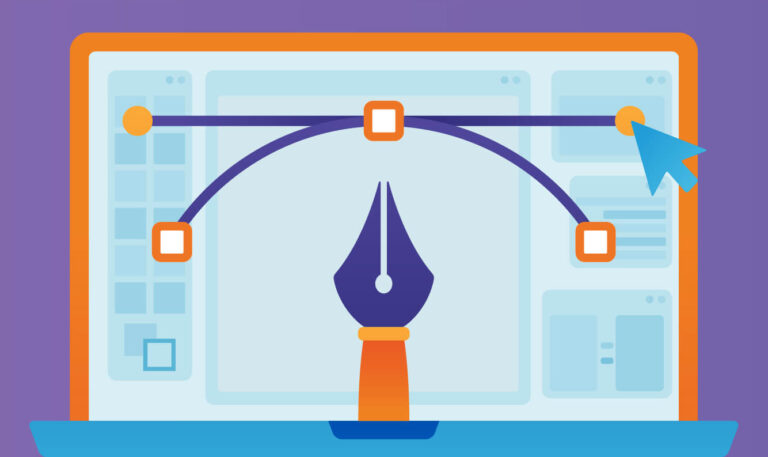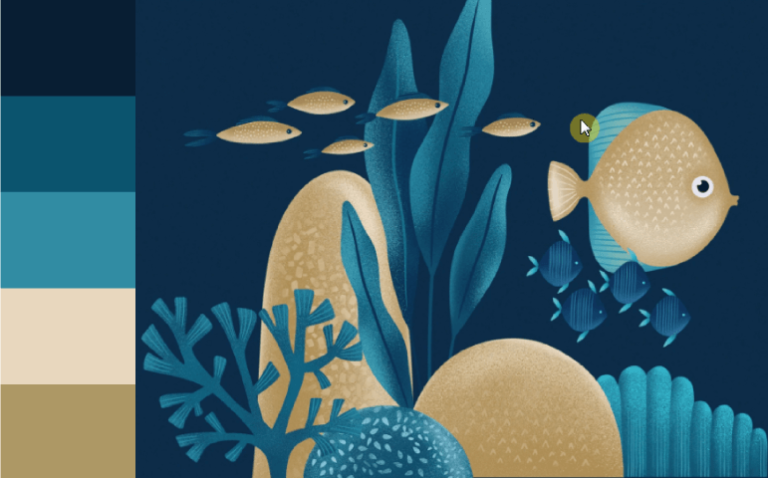How to use a sketchbook: Developing your creativity
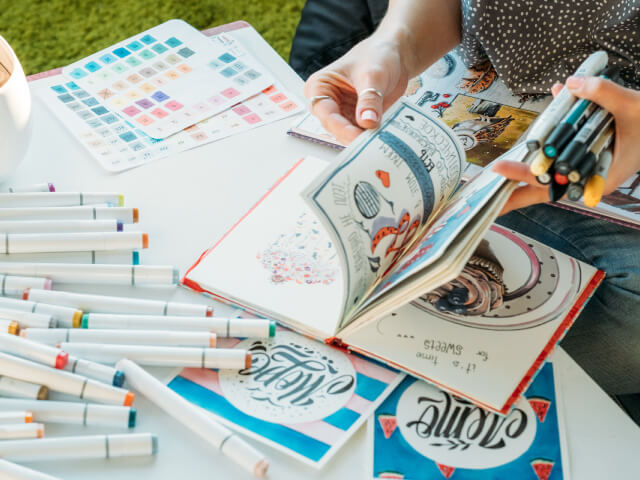
Every artist needs a sketchbook. A notebook can stimulate creativity and expression, even if you don’t consider yourself an artist.
Here are some reasons for you to use a sketchbook:
1. What is and how to use a sketchbook
A sketchbook is like a book or a notepad for drawing and jotting down ideas.
But it’s more than just a simple drawing notebook. It’s a tool that helps you be creative, express yourself, and let your imagination flow. Whether you’re good at art, want to be a designer, or just require a creative escape from your daily routine, a sketchbook can be your best friend.
You can use it to capture your ideas as they pop into your mind, immediately catching the moment’s essence. It’s a safe place to try new things, experiment with different techniques, or have fun drawing with various colors and strokes. The great thing is, there are no strict rules or a “right” way to use it. You get to explore and create freely, allowing your creativity to soar.
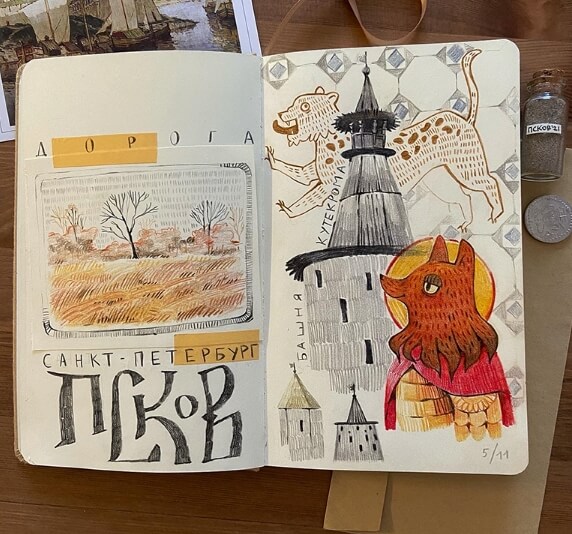
So, why not grab a pencil and dive into this fantastic artistic journey? Your sketchbook is waiting to be filled with the wonders of your imagination. Let’s get started!

2. The Benefits of Using a Sketchbook
Have you ever wondered why so many artists and creative people always have a sketchbook with them? Well, it’s because the benefits are just amazing! A sketchbook is more than just a drawing notebook; it’s a tool that gives you artistic freedom and helps you explore your creativity.
Try New Things Without Limits
One of the best things about a sketchbook is that you can experiment and make mistakes without worrying about being judged. You can be daring and try out new techniques, colors, styles, and materials. Feel free to explore what you like and discover new artistic possibilities.
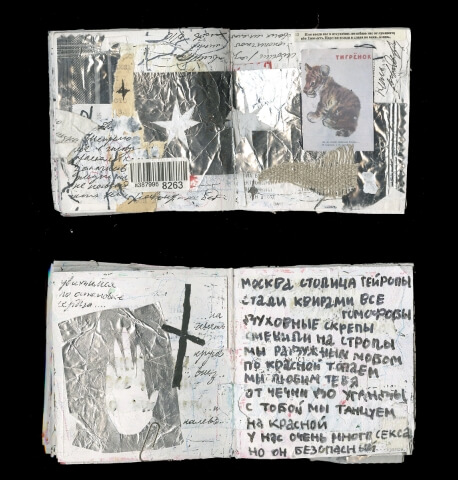
Discover Connections and New Directions
When you keep all your ideas in one place, you might find connections between different things and themes. A drawing you did months ago could inspire a new project you’re working on now. Your sketchbook can lead you to new and exciting directions in your art.
Beyond Screens: Embrace the Analog World
If you spend a lot of time using digital tools, a sketchbook offers a chance to slow down and enjoy the beauty of the physical world. You can feel different textures, experiment with brushes, and experience the flow of ink. It’s a great way to enrich your artistic expression.
Record Your Artistic Journey
Whether you’re just starting or have been drawing for a while, your sketchbook will grow with you. It’s like a diary of your artistic progress and development. Over time, you’ll see how much you’ve improved and how your creativity has evolved. Your sketchbook will be a precious record of your artistic journey.
3. How to Start Using Your Sketchbook
We all have an artist inside us, just waiting to be set free. The best way to let your creativity flow and bring your ideas to life is through a sketchbook. Don’t be scared of the empty page – this notebook is like a door to a world of artistic possibilities.
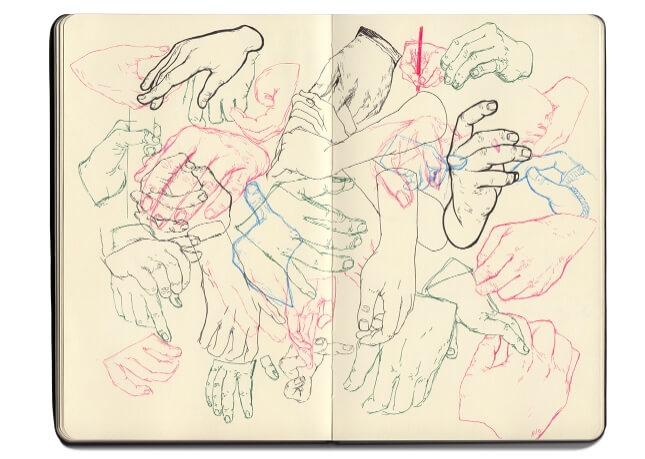
Here are some tips to get started with your sketchbook:
Forget About Being Perfect!
The sketchbook is a great place to try new things and not worry about being perfect. Don’t be afraid to make mistakes and learn from them with each drawing. Remember, every mark on the paper is a step towards becoming a better artist.
Your Visual Diary
Use your sketchbook to draw scenes from your life – people around you, beautiful landscapes, or even everyday objects. Express your feelings and thoughts with lines and colors that show your unique perspective.
Experiment and Explore
No need to be boring! Let your imagination run wild and try out different art tools and styles. Watercolors, collages, pencils, pens – there are so many possibilities! You might discover amazing artistic treasures along the way.
Have Fun!
Drawing should be a fun and exciting experience. Don’t worry about rules; just enjoy the process. There are no strict guidelines in your sketchbook, just space for your creativity to flow and your artistic spirit to shine.
4. Finding inspiration to use in your sketchbook
Have you ever looked at a blank page and felt stuck, not knowing what to write or draw? Starting something can be tough. Even though a sketchbook allows for free and simple creation, we might still feel pressure and creativity blocks that stop us. Can you relate to this situation? Don’t know what to draw in your sketchbook? Check out some tips and suggestions below to help you get inspired:
Get Creative with Ideas
Start with a brainstorming of ideas. Write down words that inspire you, feelings you want to show, and themes that matter to you. From these initial words, make a mind map with related topics. You can use your sketchbook for this. This list will give you lots of possibilities for your empty pages.
Chat with ChatGPT
Ask ChatGPT for help to get ideas. Try different commands. Artificial intelligence can be a great tool to help us expand creativity. Below is a prompt command we used:
“Make a list of 10 drawing ideas. Each idea should include a character, an object, and an action. Avoid clichés. Make associations as random as possible.”
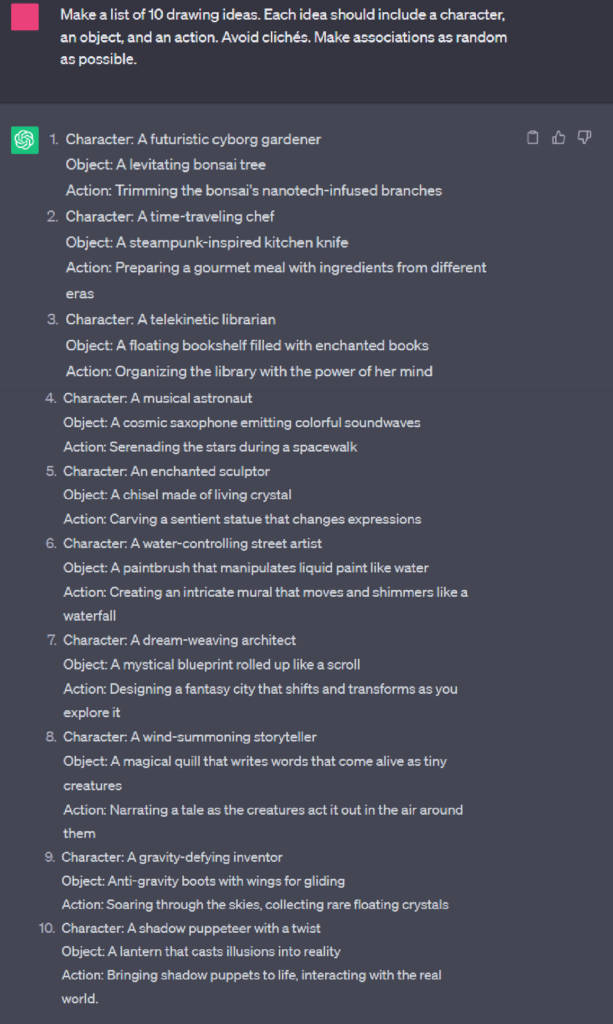
Create a Weekly Schedule
Organize a schedule with themes for each day of the week. For example, Monday could be for drawing animals, Tuesday for city scenes, and Wednesday for everyday objects. This daily challenge will keep your creativity going.
Illustrate Music and Text
Use your sketches to express your feelings and thoughts. Choose songs, poems, or texts that touch you and create drawings that reflect how you see them.
Capture Moments
Carry your sketchbook with you. Be ready to capture special moments. Draw people, landscapes, and objects that catch your eye. Everyday life scenes can be surprising sources of inspiration.
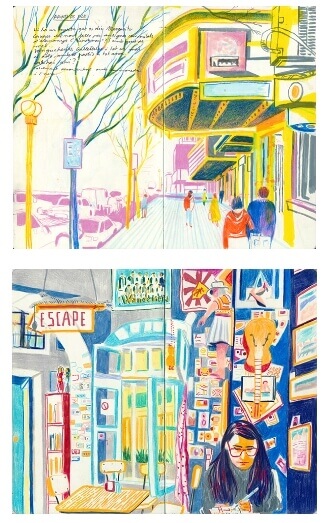
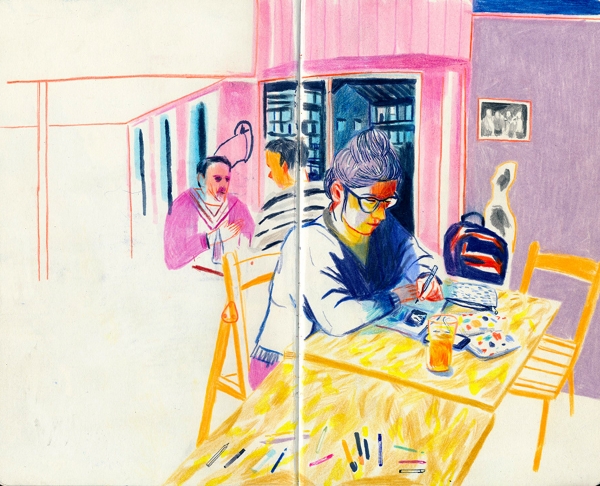
Continuous Drawings
Try continuous drawings, where you draw something without lifting the pencil from the paper. This process can lead to interesting and spontaneous creations.
Get Creative with Collages
Break the traditional rules of drawing and explore the art of collages. Cut out pictures from magazines, newspapers, or other materials and create unique designs on your pages.
Explore Lettering and Typography
Don’t limit yourself to drawing only figures. Try sketching words and phrases. Come up with new lettering styles. Add decorations and illustrations around the letters.
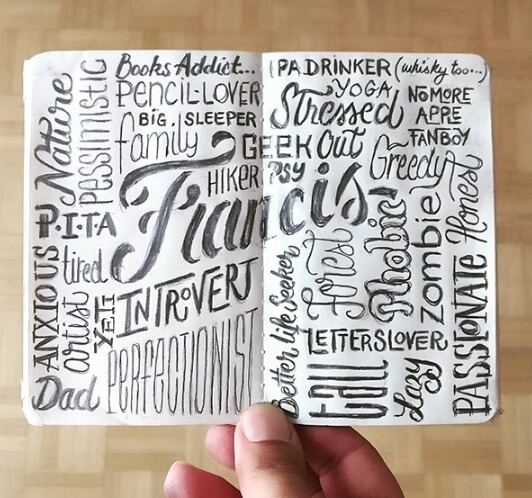
Show Your True Self with Self-Portraits
Take some time to observe yourself and create emotional self-portraits. Show different expressions and use your strokes to reveal your unique personality.
Take on Drawing Challenges
Join drawing challenges on social media or art communities. These challenges are a fun way to test your skills and connect with other creative people.
5. Ideas to Help You Start Using Sketchbooks
Check out these artists and their unique approaches to sketchbooks:
Sarah Van Dongen
Sarah Van Dongen creates beautiful and delicate drawings using gouache, watercolors, and colored pencils.
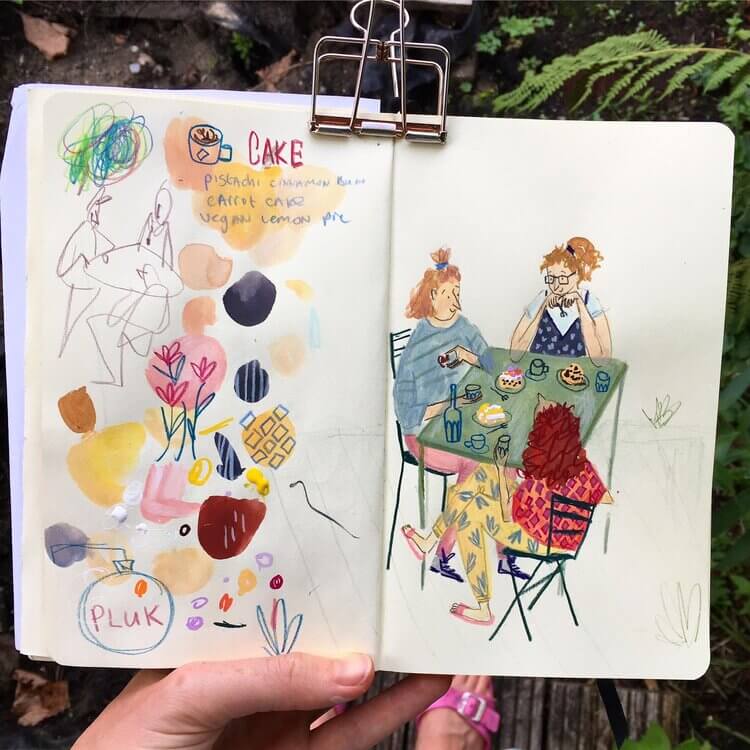
Jeanne Mcgee
Jeanne Mcgee uses handmade stamps of different shapes and designs lovely sketchbooks with captivating textures.
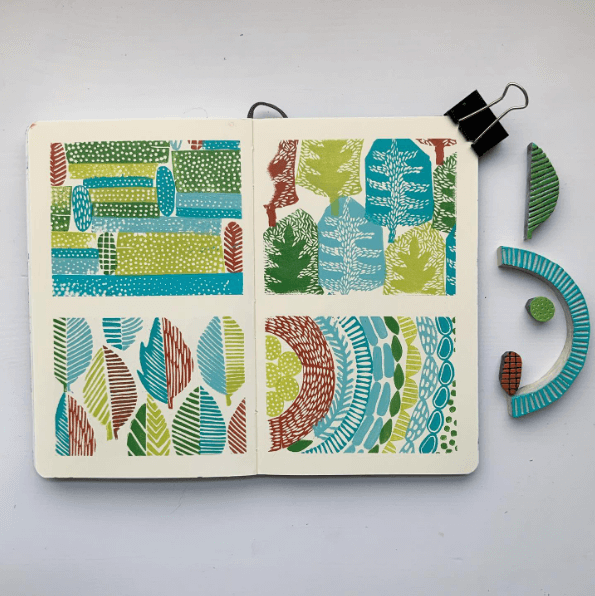
Jenny Rae
Inspired by animals and wildlife, this artist combines drawings with collages to create captivating sketchbooks.
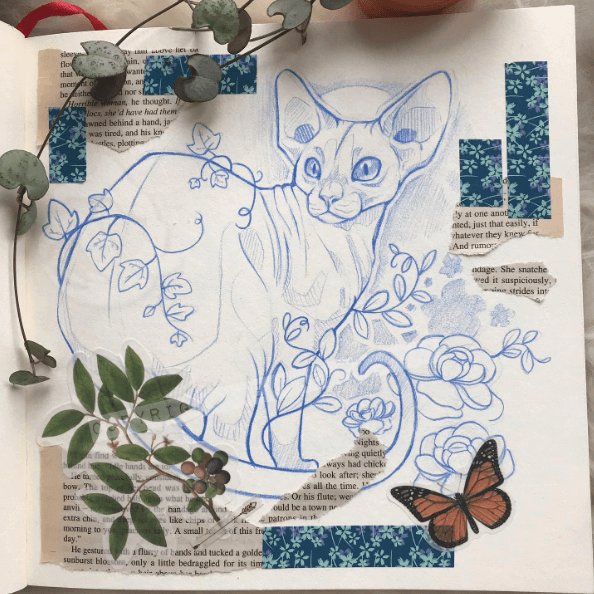
Alfonso de Anda
Using a mix of techniques, Alfonso de Anda develops his work and creativity through creative sketchbooks.
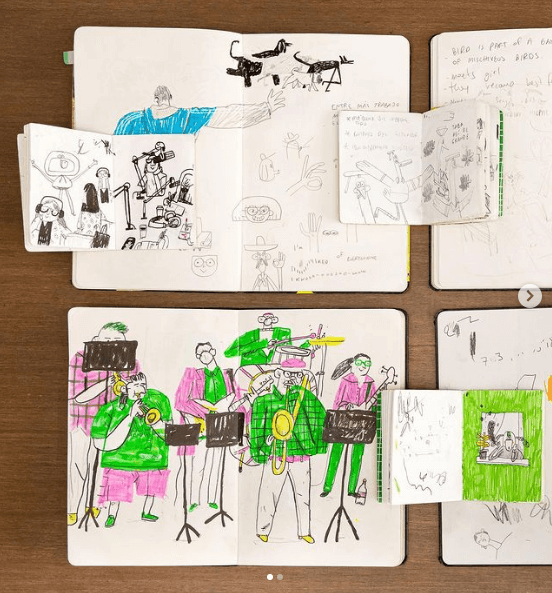
6. Tips to Improve Your Sketchbook Drawings
You have the potential to be an artist, a creative mind ready to express your ideas on paper. And maybe, when you look at your sketches, you might think, “Hmm, it didn’t turn out exactly how I wanted… Maybe I’m not good at this.” Don’t think like that. With a little dedication and practice, everyone can get better at art and even surprise themselves. Here are some tips to inspire you:
Practice and Practice: Drawing is like any other skill – the more you practice, the better you get. Spend some time every day letting your creativity flow and trying out new ideas. Every little drawing matters!
Learn from other artists: Look at the work of other artists. It can inspire you and help you learn new things. See how they draw and use different styles. This practice will give you more ideas for your drawings.
Gentle Strokes: When you start drawing, it’s normal to press too hard with the pencil, making thick and shaky lines. Try to draw with a lighter touch, and you’ll see your lines become smoother and more elegant.
Try Quick Sketches: Why not try quick and spontaneous sketches? In just a few seconds or minutes, you can capture the main idea of what you want to draw. This practice helps you become better at drawing faster.
Take Your Time: Don’t rush! Take your time to draw. Whether you do quick sketches or spend more time on a drawing, what matters is that you feel comfortable and enjoy the process.
Always have a Sketchbook: Inspiration can strike at any moment, so carry a sketchbook with you. This way, you can capture your creative sparks and draw whenever you feel inspired.
Be Bold and Experiment: Don’t be afraid to try new things! Art is about exploring and discovering. Use different styles, materials, and colors to see what you like best and what fits your artistic style.

Take Art Classes or Tutorials: The internet is full of art classes and tutorials that can help you learn new techniques and improve your skills. They can also keep you motivated to keep practicing and improving.
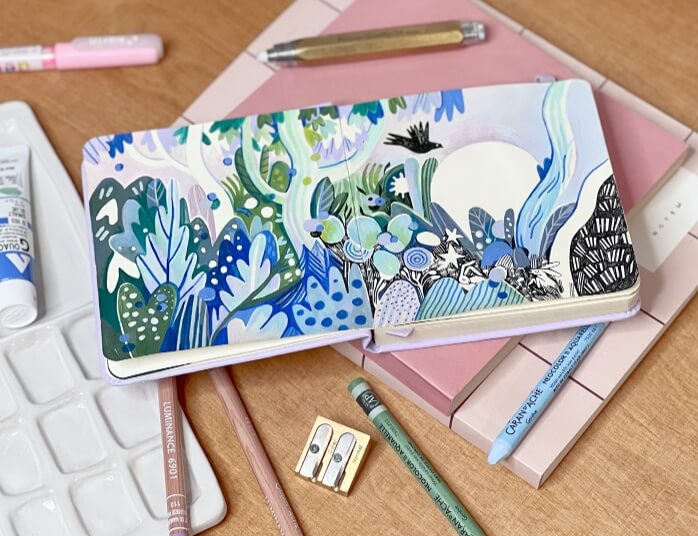
7. Start Creating Your Sketchbook Today
How about diving into the world of drawing right away with your personalized sketchbook?
Sometimes, we may feel tempted to buy those fancy sketchbooks with special papers and customized covers. While they look beautiful, they can also put pressure on us to make incredible and perfect drawings.
If you feel this way, here’s a great solution: why not use a sketchbook with simpler and more accessible materials? Regular notebooks can help us draw more freely and without pressure. And the best part is, you can even make your own!
Here are some ideas to get started:
Simple Paper Pad: You can use a regular paper pad, which you can find easily in any store.
Repurposed Scraps: Gather those pieces of paper you’d normally throw away and create a small notebook.
Diversity of Papers: Use different types of paper you already have at home. Used papers, written ones, or even printed ones can be great materials.
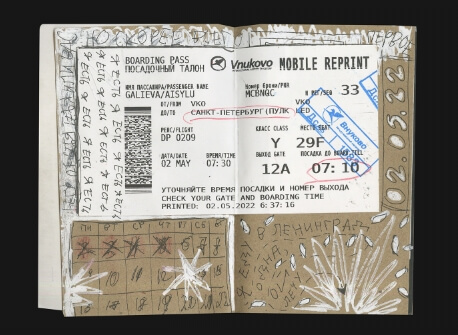
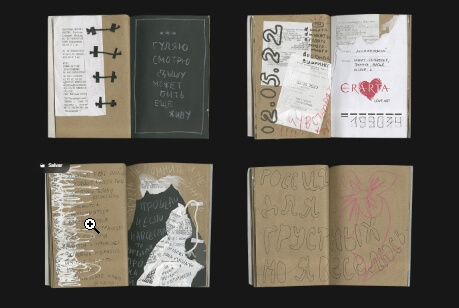
Used Papers: You don’t need blank sheets for a drawing notebook. Pages with drawings or writings can be inspiring. You can use them to complement your drawings or add texture.
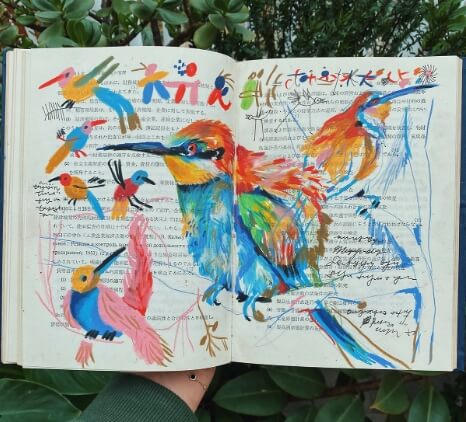
Creative Fabrics: How about making a sketchbook out of fabric? Old pieces of cloth can become fantastic materials. Don’t worry; you can find special paints and pens for drawing on fabric at stores.
Now that you know all these options for making and using a sketchbook, why not start today? Don’t put it off. You’ll be surprised by what a simple sketchbook can do for your art. So, let’s get creative! Draw, scribble, and allow yourself to create freely. We can’t wait to see the amazing things you’ll come up with on your pages!


